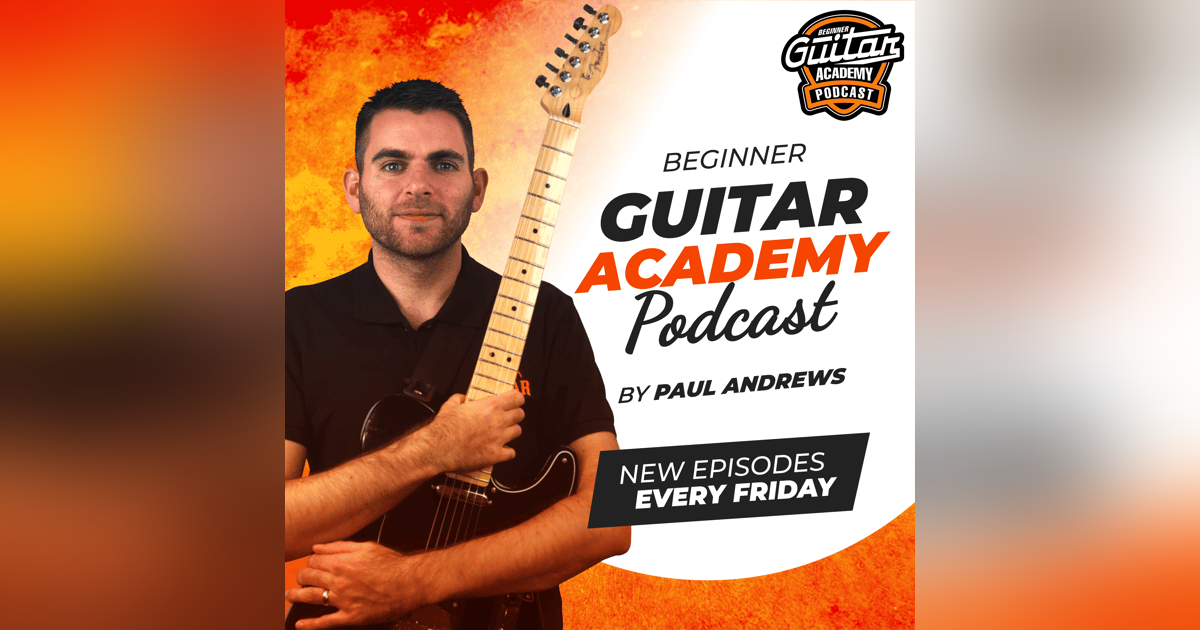245 - Major vs. Minor Blues: What’s the Difference?
In this week’s episode, Paul tackles a common question from Beginner Guitar Academy members: What exactly does it mean when someone says “a blues”—is it a minor blues, and is there such a thing as a major blues?
Paul breaks down the differences between major and minor blues progressions, walks you through classic chord sequences, offers examples of famous songs you can listen to and learn, and shares practical tips for practicing both styles.
Key Topics Covered:
Community Updates:
- Recap of the recent live Q&A (available in the Academy and member-only podcast)
- Announcement of a new, easier capo version of “Every Breath You Take” (now available in the riff section)
Main Topic: Blues Explained
- What guitarists mean by "a blues in A"
- Almost always refers to a 12-bar blues progression in A using dominant 7th chords (A7, D7, E7)
- Concept of the “major blues”:
- Based on dominant 7th chords—these have both major and minor elements due to the flattened seventh
- The most common form you’ll encounter
- Guitarists often solo over these chords using the minor pentatonic or blues scale, creating a signature, gritty sound
Examples of Major Blues Songs:
- “Pride and Joy” — Stevie Ray Vaughan
- “Hoochie Coochie Man” — Muddy Waters
- “Johnny B. Goode” — Chuck Berry
What is a Minor Blues?
- Structured identically (12-bar format) but uses minor chords (e.g., Am, Dm, E7)
- Creates a darker, moodier, and more soulful sound
- Suitable scales: natural minor, Dorian mode for colour, and minor pentatonics for soloing
Examples of Minor Blues Songs:
- “The Thrill Is Gone” — B.B. King
- “Tin Pan Alley” — Stevie Ray Vaughan
- “Ain’t No Sunshine” — Bill Withers
Major vs. Minor Blues at a Glance:
- Major blues: dominant 7 chords, upbeat and gritty
- Minor blues: minor chords, soulful and emotional
Why This Matters for Beginners:
- Understanding the difference helps when searching for backing tracks or improvising
- Knowledge of these forms is crucial for jamming, songwriting, and selecting suitable scales while soloing
Practice Tips:
- Try out both progressions with open and dominant 7 chords
- Jam over loops you record yourself for both major and minor blues
- Learn one song in each style, such as “Before You Accuse Me” (major) or “Ain’t No Sunshine” (minor)
- Record your playing to compare the feel between major and minor blues
Extensions/Chord Choices:
- Use dominant 7 chords for major blues (not just major triads or major 7 chords)
- For minor blues, try minor 7 extensions for a richer sound
Links & Resources:
- Watch the video podcast: BGAPodcast.com/245
- Learn more and start your two-week trial for just $1: beginnerguitaracademy.com
- Member Q&A and riff lessons are accessible in the Academy dashboard
Enjoying the Show?
If you’ve been finding these episodes valuable, please rate and review the podcast on your listening app or at bgapodcast.com.
Thanks for tuning in to the Beginner Guitar Academy Podcast!














